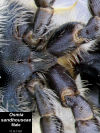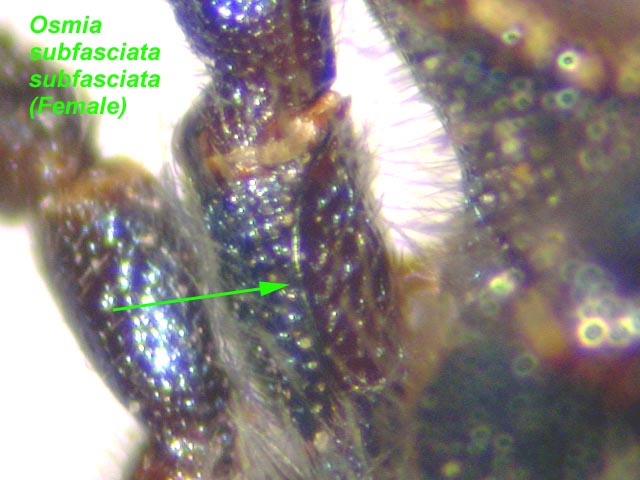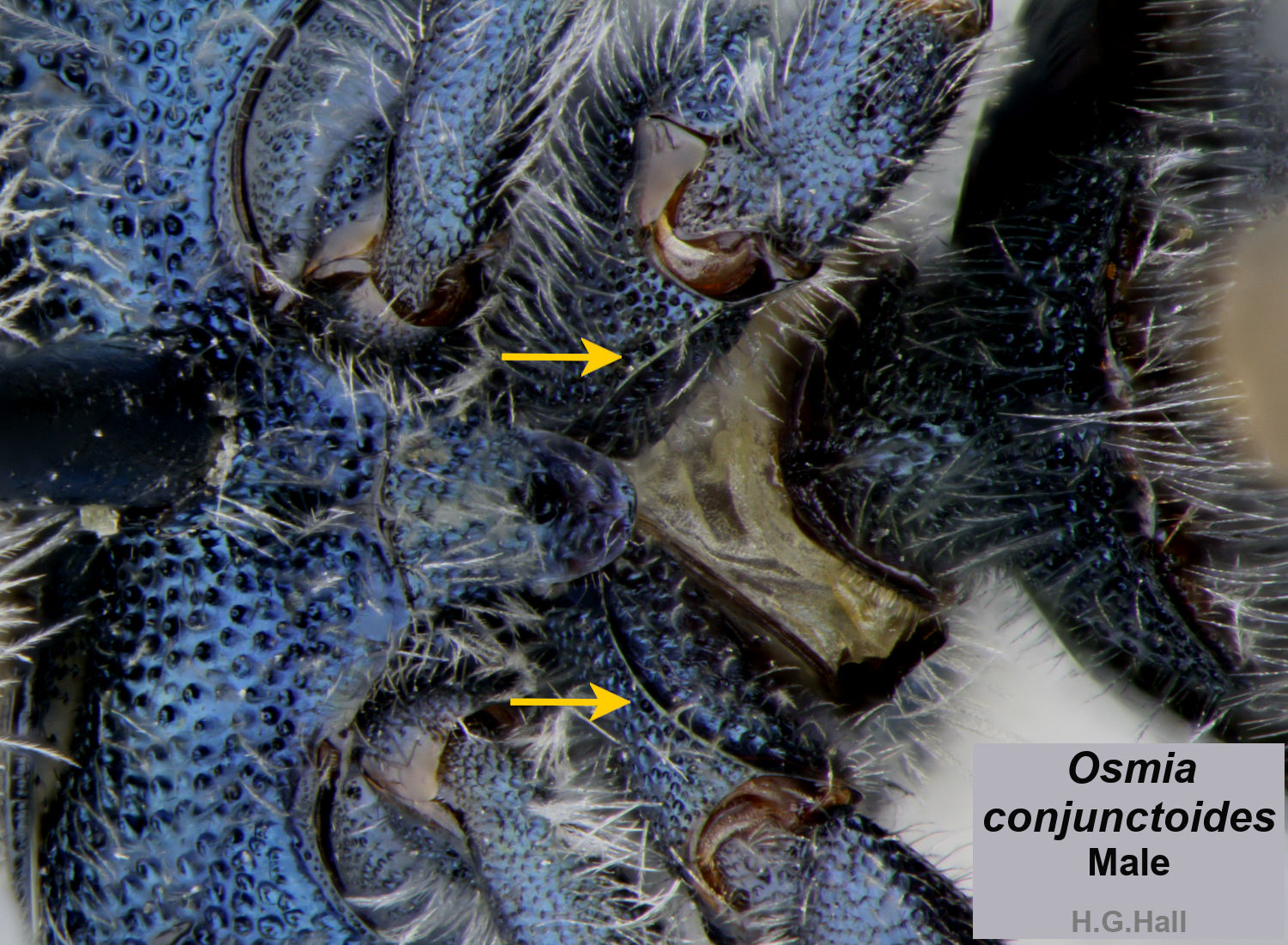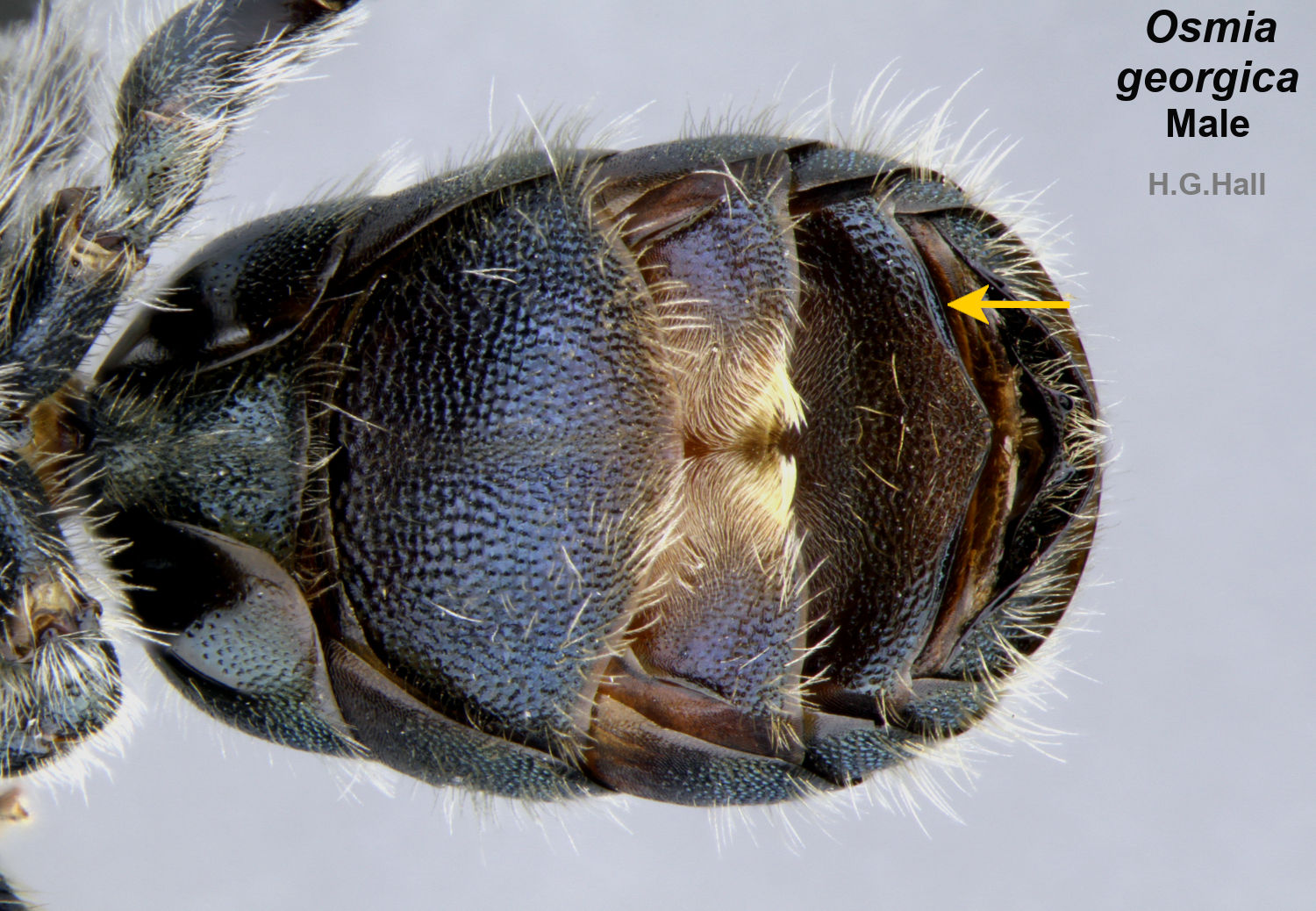Genus Osmia Panzer, 8 taxa
In Florida, these are all bright blue bees of medium to
large size. They are all spring-flying bees, mostly in March and April, although
some species have been collected in February and later to July. These bees use
nests in cavities that they do not construct. Subgenera are numerous and in
Florida include the subgenera
Diceratosmia,
Helicosmia,
and
Melanosmia
Key References to Osmia in Florida
Rightmyer, M. G, Deyrup, M., Ascher, J. S., Griswold, T. 2011. Osmia species (Hymenoptera, Megachilidae) from the
southeastern United States with modified facial hairs: taxonomy, host plants, and conservation status. ZooKeys 148: 257-278
Rust, R. W. 1974. The systematics and biology of the genus Osmia,
Subgenera Osmia, Chalcosmia, and Cephalosmia (Hymenoptera:
Megachilidae). The Wasman Journal of Biology 32(1): 1-93.
Sandhouse, G. A. 1939. The North American Bees of the Genus Osmia
(Hymenoptera: Apoidea). Memoirs of the Entomological Society of Washington 1:
1-166.
Key to subgenera in Florida (both males and females)
1. Hind coxa with strong longitudinal carina along inner ventral angle....Diceratosmia
Hind coxa not carinate....2
2. Males....3
Females....4
3. Sternum 4 with apical margin laterally consisting of two carinae between
which is a narrow, hairless, shiny groove....Helicosmia
Sternum 4 with apical margin thin, without groove....Melanosmia
4. Orange hairs beneath clypeal margin arranged in four tufts; depression
across mandibular base deep and set off almost vertically from adjacent
mandibular surface and commonly emphasized by mandibular swelling just
distal to depression....Helicosmia
Orange hairs beneath clypeal margin arranged in two tufts or brushes, or sometimes absent; depression across mandibular base usually less abrupt or
absent and not emphasized by swelling distal to it....Melanosmia

















